|
This piece was originally broadcast on Radio Scilly in May 2019.
A post on our COSMOS Facebook group from a London-based friend of mine prompted me this week to turn my attention, once again, to the Moon. Our last astronomy talk on St Martin’s looked at the Earth’s cultural relationship with the Moon, from dragons to werewolves, many of which mythical. And yet there are many cultures around the world for which the Moon has a very real influence. My friend was requesting help to spot the new crescent Moon, on the evening of 5 May. As a Muslim and a keen amateur astronomer, he – and his group of friends based at the Royal Observatory in Greenwich – always look for the new crescent, to begin Islamic months. The Moon plays a significant role in Islam, because Muslims follow a lunar calendar. Specifically they use the first appearance of the new crescent moon (after the non-visible New Moon) to determine the start of each month. The moon is thought to be a sign of God, and indeed is mentioned directly no less than 28 times in the Koran. In fact, the importance of getting the start of months correct and spotting that new Crescent, was one of the drivers for the study of astronomy across the Islamic world. And we have a LOT to thank for it! Numerous stars carry names given to them during the golden age of Islamic astronomy. Most of those in the plough, for a start (Alkaid, Megrez, Merak, Dubhe), plus Aldebaran, Deneb, Rigel, Saiph…. I could go on. This month’s moon gazing was particularly significant, because the sighting of the new crescent determines the start of Ramadan, the most holy of Muslim months, during which followers fast from dawn to dusk. While we don’t have a sizeable Muslim population on the islands, we are well placed to contribute scientifically to this important cultural area of astronomy; with both our dark skies and low, even horizons, chances are we’d be some of the first to spot a new crescent (far better than my friend in London, as I know from experience!). Sadly, however, the clouds didn’t play ball for us, so we had to leave crescent spotting to moon lovers in other climes. Indeed, the new crescent was not spotted anywhere in the UK, or Western Europe. Believe it or not, particularly where Ramadan is concerned, the spotting of the new crescent can be a rather political issue in the Muslim world. Not all Islamic countries use the first sighting of the crescent Moon to signal the start of the month. Saudi Arabia (which has few official astronomers) has been accused of fixing the start of each month and has been criticised for its perceived ‘control’ of the Muslim calendar. Many Muslim countries now follow the lead of the Saudis to set their dates, having veered away from raw astronomy into political allegiance. Those following the local moon in the UK started Ramadan on Tuesday 7 May, whereas those Muslims who follow the Saudi-led calendar started a day earlier, as the Saudi determined Ramadan to begin on 6 May. Bring back the astronomers, some say. The Moon will be growing in size as the crescent waxes towards Full Moon on 18 May. Now is a good chance to grab those binoculars and cast your eyes up onto that celestial body that continues to have a hold over us earthlings.
0 Comments
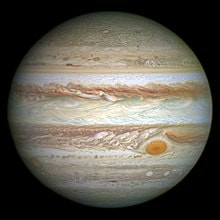 This piece was originally broadcast on Radio Scilly in April 2019. During April, Jupiter, the largest planet in our solar system, is increasing in brightness and visibility. It’s been absent from our skies for months, along with lovely ringed planet Saturn. At the moment, Jupiter’s a dominant object in the wee hours of the morning, albeit one that doesn’t get very high in the sky. However on Scilly, our long and low horizons give us a good chance of seeing. By the end of the month Jupiter will be rising in the sky from midnight. However for now, you’ll have to be up just before dawn to catch a good glimpse of this bright gas giant. Currently, the planet reaches its peak height (also known as its culmination) somewhere around 4am. Is it worth getting out of bed for? If – like me – you’ve missed this gem of a planet then of course the answer is yes. And the bonus is that at the moment it’s best viewed with binoculars or a small telescope. However the truth is that Jupiter will be visible far better as summer gets into swing and it rises in the sky. Rather earlier at that. By July, it’ll be visible at dusk! Jupiter is the 4th brightest object in the night sky, after the Moon, Venus and then Mars. Jupiter is known as the largest planet in the solar system, and by quite some stretch. Jupiter’s mass is 318 times that of the Earth, and in fact Jupiter is 2.5 times more massive than all of the other planets in the solar system combined! It’s a gas giant, mostly composed of Hydrogen with some Helium, though it likely has a rocky core. To look at, it’s stripey – as it has a distinctive system of bands of clouds, made from ammonia crystals, looping round its middle. With binoculars, you’ll be able to see Jupiter as a flat disc, this shape caused by its incredibly fast spin rate for such a whopping object – a day on Jupiter is just 10 hours short. With a small telescope, you’ll be able to pick our Jupiter’s distinctive clouds and possibly – depending on timing and visibility which always requires a bit of luck – the great red spot. This is a giant tornado-like storm that’s been raging on Jupiter for at least 350 years. With winds at an estimated 270mph, it really is blowing a hoolie. Jupiter can be found, low in the sky, early in the morning, by looking to the South! This article originally appeared in Scilly Now & Then magazine's April/May edition.
Now the clocks have gone back as we are in the midst of a lovely Scilly spring, the downside does mean later nights for us stargazers, and, potentially, the start of bleary-eyed mornings. That aside, there’s still much to enjoy up there. The Spring constellations are slowly working their way into peak position in the night sky. We’re fast losing Orion; Taurus is hot on its heels, if at all visible, and the twin stick-figures of Gemini are low in the sky. Between the much fainter constellations of Cancer and Virgo you will now spot Leo, the lion. If these names sound familiar it’s probably because you’ve read about them in the back of a magazine in your horoscope, and yes, they are constellations of the Zodiac. But I’m not talking about your ‘star signs’. Astrology – unlike astronomy – is not a science, although to be fair, they both involve the stars. That’s where it ends. Astronomy can explain the position of the stars in the sky, but frankly, it’s up to you to interpret their meaning. In astronomy, the Zodiac refers to the twelve constellations that our Sun passes through, identified back in the day by the ancient Babylonians. This area of sky also includes the apparent paths of the moon and the planets. We also call this imaginary line frequented by Moon, Sun and planets ‘the ecliptic’. Arcing at 25.5 degrees, East to West, locate this area of the sky and you will also find some of the most wonderful night sights. Leo is one of the oldest recognised constellations in the night sky, documented even by the Mesopotamians, and known as the lion in many ancient cultures. Handily, it’s one of the few constellations that looks like its namesake. You can find the Lion’s head south of the ‘dipper’ in the Plough, where it appears as a backwards question mark. The bottom of this sickle is Regulus, Leo’s brightest star, noted for its fast bullet-like shape and peculiar motion. Back on Earth, our observatory is now open for the season on St Martins. For 2019 our regular openings – come rain or shine – will be Tuesday evenings and Friday afternoons, for a look around and fingers crossed some star (or sun) gazing. We’ll open other nights, which will vary week to week depending on cloud and astronomical events. We look forward to welcoming you – finally – to Scilly’s own observatory! This piece was originally broadcast on Radio Scilly in March 2019.
It’s been a glorious week for Scilly stargazers, with still, clear days turning into still, clear nights! What luxury, and after the disappointing Winter season, it’s been great to have several reliable nights in a row to gaze up and reacquaint ourselves with the starry blanket above! When I do have a clear night, I like to test out my knowledge of where the constellations are, piecing together the sky in a map. After lots of clouds, where you might be snatching moments to find a particular object, an open sky offers the chance to get back to basics. Here’s a constellation that will open up many others for you: Ursa Major, better known by its asterism name, the Plough. It’s got to be the most well known groups of stars in the sky. Most people can point it out. Lesser know, is its job as a navigation tool! The plough appears as 7 bright stars. You’ve got 3 forming the curved handle and then 4 forming a sort of bowl or shallow bucket shape. In France the plough’s known as the saucepan, for obvious reasons. There are actually 8 stars in the plough as the handle includes double stars Mizar & Alcor. If you look for the second star in from the end of the handle you’ll easily make it out as a pair with binoculars or small telescope. The brightest stars of the ‘pan’ part are those on the far right, Dubhe, top of pan & Merak bottom right of pan. To find Polaris, trace a line from Merak up through Dubhe, then extend that line 5 times, until you reach the Pole star, less than 1 degree from true North. Arc to Arcturus, by following the curve of the plough’s handle down, to reach distinctive bright, red star Arcturus in Bootes. Cross the top of the bowl, continuing past Dubhe, leads in the direction of Capella – cap to capella! And one more. Follow down the 2 stars of the pan nearest the handle (Megrez & Phecda), and you’ll reach Regulus, the brightest star in Leo. A hole in the bowl will leak on Leo, as the saying goes. There are even more, but give those a go for now. And here’s to many more clear nights! 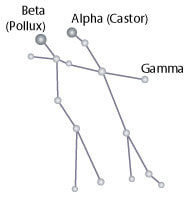 This piece was originally broadcast on Radio Scilly in March 2019. I do love this time of year when the nights start drawing back and you’re no longer walking to and from work in the dark. However the downside does mean later nights for us stargazers, and, potentially, the start of bleary-eyed mornings. That aside, the Spring constellations are slowly working their way into peak position in the night sky. Gemini and Leo are taking prominence high in the sky at the moment, with the very faint Cancer in between – if these names sound familiar it’s probably because you’ve read about them in the back of a magazine in your horoscope…and yes, they are constellations of the Zodiac. But I’m not talking about astrology or your ‘star signs’ here. Astrology – unlike astronomy – is not a science, although to be fair, they both involve the stars. That’s where it ends. Astronomy can explain the position of the stars in the sky, but frankly, it’s up to you and Mystic Meg to interpret their meaning. In astronomy, the Zodiac refers to the twelve constellations that our Sun passes through, identified back in the day by the ancient Babylonians. This area of sky also includes the apparent paths of the moon and the planets. We also call this imaginary line frequented by Moon, Sun and planets ‘the ecliptic’. Back to what you can actually see. Gemini is easy to spot, even for the most amateur of stargazers. It’s at its best right about now. You’ll spot Gemini northeast of Orion and it looks (if you join the imaginary dots) like two stick men holding hands. Apt, because Gemini represents the twins. Making it one of the few constellations that actually looks vaguely like what it’s called! The twins in question are Castor and Pollux from Greek mythology, inseparable brothers who became known as the Sons of Zeus. They were placed in the sky by dear old Zeus to honour their brotherly love. And there you are: Castor and Pollux are the names of the two brightest stars, which form the heads of our starry stick-twins. Back on Earth, we’re gearing up for the start of the season on St Martins, and our observatory will be open to the public from the beginning of April. For 2019 our regular openings –come rain or shine- will be Tuesday evenings and Friday afternoons, for a look around and fingers crossed some star (or sun) gazing. We will be open other nights, but those will vary week to week depending on the weather and interesting night sky events. If you’d like to visit or find out more, drop me an email, have a look at our website, or find our group on Facebook. Email: [email protected] Facebook: COSMOS Community Observatory St Martins on Scilly Here's a copy of the constellation anagram round, from one of the St Martin's quiz evenings. See how many you can get!
 This article originally appeared in Scilly Now & Then magazine's March edition. The Winter months haven’t been particularly kind this year for us stargazers, with cloudless nights rather lacking. As Spring comes upon us, sadly that does mean the nights grow shorter, however we’re ever hopeful for some better weather! The biggest news is that we now have an Observatory on St Martins. We’ve had time over Winter to get the kit set up and ready to use – though this has taken more time than we’d like, because you can’t configure a telescope when you can’t see any stars! Our biggest piece of kit is a 14 inch Meade telescope, quite a beauty. On our first proper go, we pointed it at the Moon – I took a very amateur picture just for posterity, out of sheer excitement. It was incredible: the amount of detail you can see, quite mind-blowing. Next to find the planets and deep sky objects. We’ll have to wait until Summer to see COSMOS favourites Saturn and Uranus at their best, but Mars is currently bright and red in the evening sky, to the West in Pisces. Our skies – when the clouds are elsewhere – offer a wonderful display at the moment, with recognisable constellations high in the sky: among them Orion, Gemini, Taurus (and therein the Pleiades), Auriga, Cassiopeia and Perseus. This patch of sky is great to learn to navigate with the naked eye, where we must start! Repetition is key to learning your way around. Learn the constellations and then explore within and around them. For example, I’ve learned by heart how to spot neighbouring spiral galaxy, Andromeda, using Cassiopeia as a pointer. It’s only by doing things again and again that you gain confidence. So it will be with the Observatory, in this, our first year of opening. As we step into the unknown, and open to the public, we have a plan but equally that plan will evolve (and, leitmotif alert, be subject to the mercy of our dynamic weather). We will be open ‘officially’ from 1 April 2019. The site will not be open all the time – as we’re a team of volunteers – but we have set openings on Tuesday evenings and Friday afternoons. These are fixed, come rain or shine. Plus we’ll be open other nights, confirmed nearer the time, for special events and talks. If you’re visiting Scilly this year, we’d love to see you on St Martins. Our website (cosmosscilly.co.uk) has all listed events, or email me for any additional info at [email protected]. Thank you for all your support in getting to this point. The Observatory really is a community project come to fruition, made possible by the belief and enthusiasm of many of you. Now it’s time to use it!  This piece was originally broadcast on Radio Scilly in February 2019 Have you ever looked up at the stars on a clear Winter night and noticed a faint but bright fuzzy patch, somewhere near Orion? Unmistakeably a glowing thing, but not the pinpoint of light like a regular star. You might have rubbed your eyes or wondered…what IS that cloudy starry thing? Well that would be the Pleiades – also known as the Seven Sisters. Officially part of the constellation Taurus. The Pleiades are one of the nearest star clusters to us here on planet Earth. A star cluster being simply a group of stars, bound together by gravity. The Pleiades are an open cluster – which means they’re all relatively young stars. These types of clusters are only found in spiral galaxies, like ours, the Milky Way. To find the Pleiades, follow the line of Orion’s belt up, through red-looking star Aldebaran (the main star in Taurus, and easy to spot as it’s a bright one). Keep going in pretty much a straight line and you’ll reach your cluster destination. This is much easier to master with the naked eye. Once you’ve found it, then grab your binoculars and point them in the area you were just looking! The Pleiades are a fuzzy mystery with the naked eye but through binoculars are a real treat – you can clearly make out the 7 brightest stars, and many, many more. Grab any pair you can find and give it a go – you won’t be disappointed. You might need to scout around a bit to locate the cluster but once you’ve found it, it’s unmistakeable. With the naked eye, if you want to make sure you’ve found it, just direct your eyes’ focus ever so slightly to one side of the fuzzy patch. Funnily enough it will look clearer – that’s because the edge of our vision is more sensitive to subtle light, because the majority of our light-sensing rod cells are located in the peripheral retina. The opposite is true for colour though, so don’t be attempt this technique when trying to be sure that you’re looking at red planet Mars! Enough of the eye science. Back to the Pleiades. In mythology, the Pleiades are the seven divine sisters – supposedly very attractive ones at that – daughters of the titan Atlas and the sea-nymph Pleione, hence Pleiades. However it’s thought that the name of the cluster actually comes from the Ancient Greek plein, meaning to sail, as the appearance of the star group in the sky marked the beginning of the Greek sailing and navigation season. Interesting fact for those – like us on Scilly – reliant on boating! Here and now, the Pleiades dropping lower in our sky is more likely to indicate the start of our tourist season. Winter having been fairly rubbish all round for stargazing, we’re hoping to spend more time up at the Observatory as Spring comes along. Anyway, grab a look at the wondrous Pleiades while you can – stay hopeful for a patch of clear sky! Last Friday, I shared a few star facts with the Reception class (aka Toppers) of the Five Islands Academy, at the Carn Gwaval base on St. Mary's. They have been looking at fun things to do at night time - obviously stargazing needs to be on the list!
We looked at the Plough and Orion, and completed dot-to-dot puzzles of these. We also learned the words ‘astronomer’ and 'constellation'. Their homework was to find Orion’s belt! I can't wait to hear how they got on. 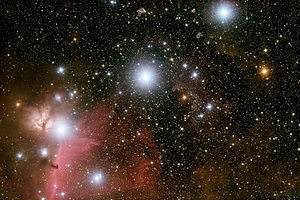 This piece was originally broadcast on Radio Scilly in January 2019. Orion is one of the gems of the Winter sky. Right now, this unmistakeable constellation, famous for its ‘belt’ of 3 stars in a row, lies due south in the sky and is clearly visible as soon as it’s decently dark. As I speak, that’s roughly 6.30/7pm. Orion’s a really rewarding constellation for beginners and experts alike, as it has lots of items of interest. Orion was a hunter in Greek mythology, a rather good one, as he managed to place Zeus (king of the gods) in the sky, as the constellation Orion. To find our hunter in the sky, look south and find the constellation with its 4 corners and distinctive 3-star belt. As you’re looking at it, the top left and bottom right of the 4 corners are interesting to observe. The top left, Betelgeuse, is a red giant star nearing the end of its life; you can clearly see it has any orangey hue, almost (but not quite) to rival that of Mars. Contrast Betelgeuse with the blue tint of the bottom-right star of Orion; Rigel (or, if you must, Rigel just like Nigel) is a blue supergiant and the 6th brightest star in the night sky. Look directly at the stars to get the best of their colour; for even more pronounced viewing, grab a pair of binoculars. The great Orion Nebula hangs below Orion’s belt. It can clearly be recognised with the naked eye as something other than a star…something more…nebulous. It’s a place – in our Milky Way – where stars are born: literally. It is a stellar nursery. Stick your binoculars – or even a modest telescope – in that direction, and you’re in for a treat. Orion is the centrepiece object of the Campaign for Rural England’s Star Count 2019, running throughout February, designed to survey the darkness (or lack thereof) of England’s night skies. Find – again, the 4 corner stars of Orion; these will give you a rectangle. Allow your eyes to adjust for, say, 15 minutes. Now, with the naked eye, how many stars can you count within that rectangle? You can’t count the 4 corners but you can count the 3 in the belt. To give you an idea, if you can count less than 10, you’re somewhere rather light polluted. If you can count more than 30, you’re looking at truly dark skies! In the Campaign for Rural England’s recent Night Blight report, Scilly was recorded to have the darkest skies of anywhere in the UK – and long may that continue. So get out there and prove it. Finally, the Observatory on St Martins will be officially open to the public from 1 April. We’ll be shortly publishing our schedule of events for the season shortly. In the meantime, if you want to find out more or have a look around, do get in touch. Happy stargazing. |
BYCharlie Payne POSTS
September 2024
|

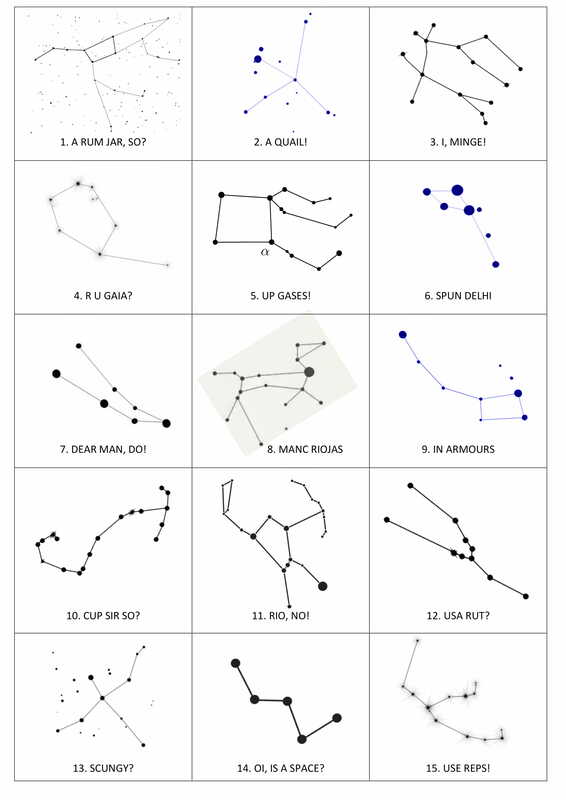
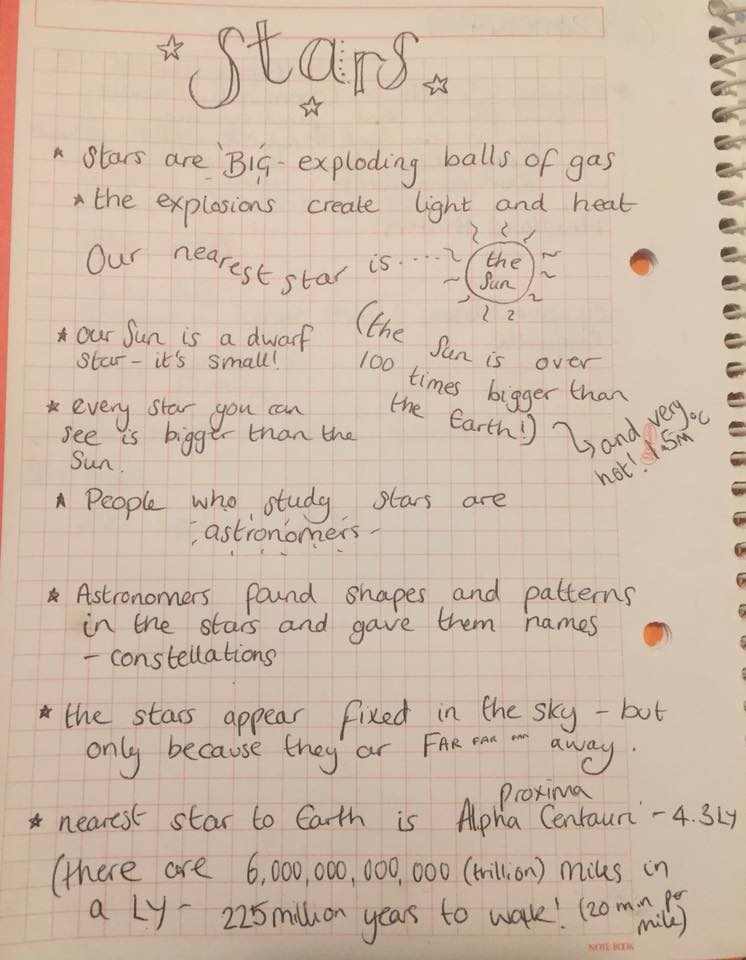
 RSS Feed
RSS Feed